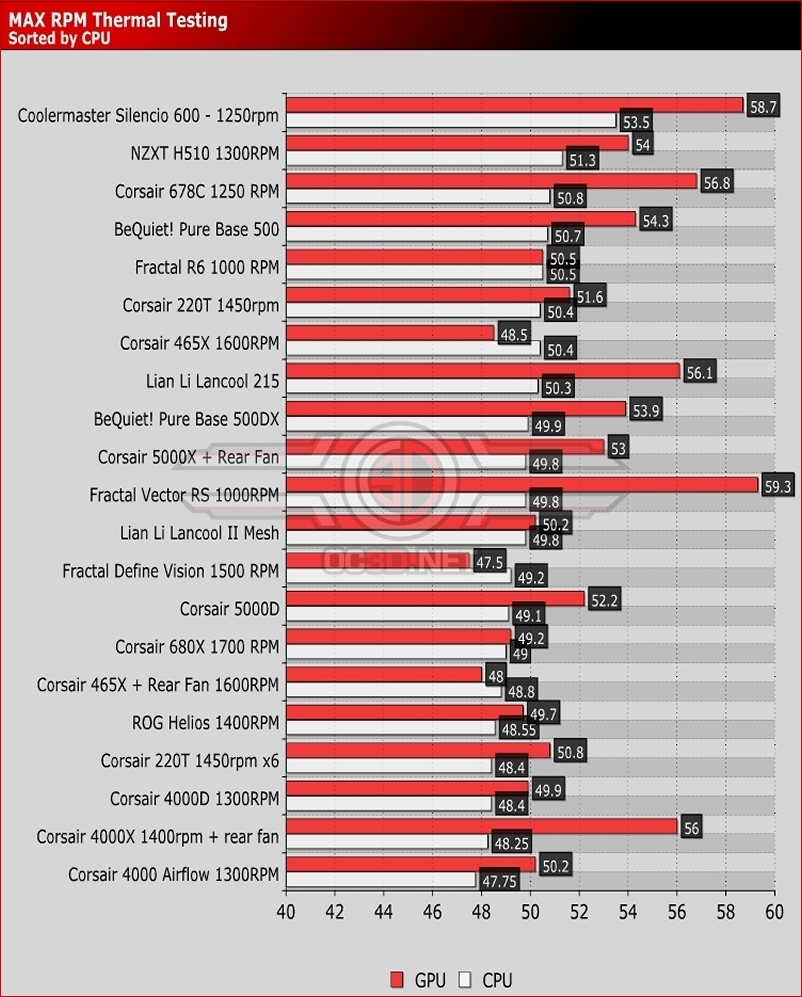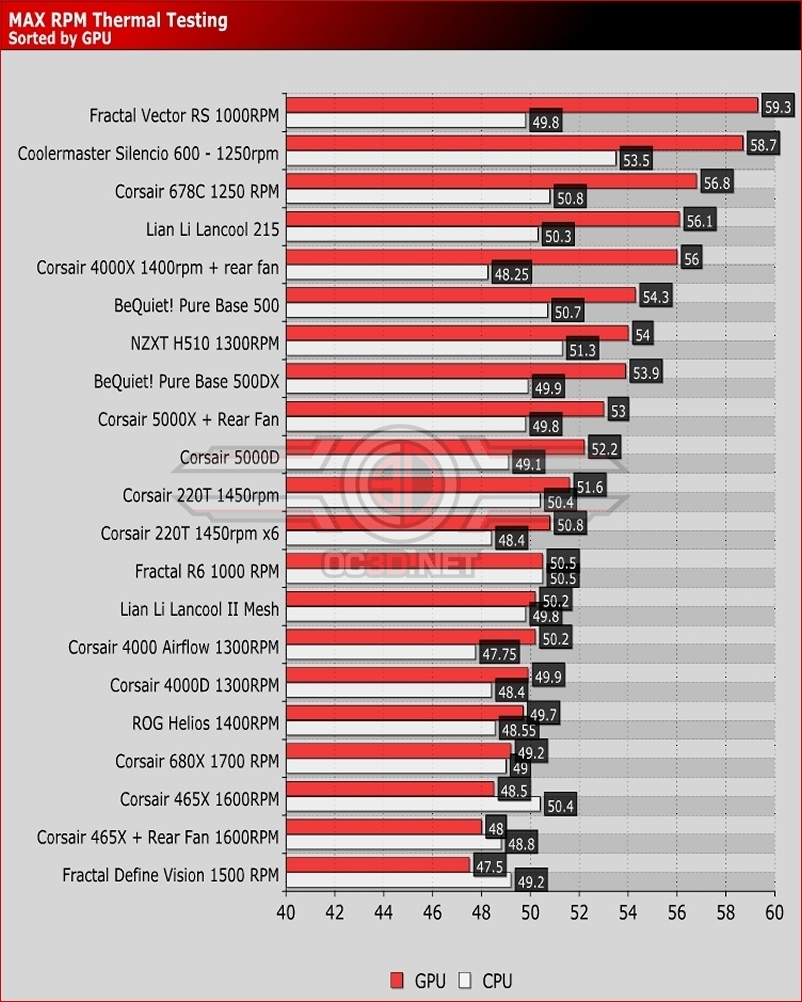Corsair 5000 Series Cases Review
Thermal Testing Â
Thermal performance is an essential factor for any PC case. Your system may look fantastic and seem silent from the outside, but all of that is for nought if your PC has the internal temperature of an oven. Your PC case needs enough airflow for your components to remain cool under load and to prevent any form of thermal throttling. For our test, we used the following hardware using fixed fan speeds (so that only the case and its included fans can influence thermal performance).
Corsair 5000X iCUE RGB Case
Corsair 5000D Airflow
Intel i9-9700K @4.8GHz at 1.2V
ASUS ROG Strix Z370-F Gaming @ 100% Current Capacity/ LL lvl16
Cooler Master Hyper 212 Black Edition @ 9V via Fan Speed Reducer
Nvidia GTX 980 Reference @ 60% Fixed Fan Speed
Corsair LP Vengiance LP (Grey) @ 3200MHz
Corsair MP500 M.2 NVMe SSD
Corsair RM550X Power Supply
The graph below showcases Delta temperatures with a controlled ambient temperature of 20 degrees Celsius.Â
Results
We’ve had to add an extra fan into the 5000X case to get some airflow going out of it too. Out of the box the 5000X expects you to have a bit of hardware on hand, or at least be running an AIO to help exhaust. With only intakes and the Hyper 212 the air would just gather in the case. In the real world of course you’d have a roof AIO and an exhaust fan, and thus we think this single addition is still providing valid results, despite our best efforts to test things as they come out of the box.
It should come as no surprise to see the 5000D Airflow has lower temperatures, especially with all that mesh.
CPU
GPU





